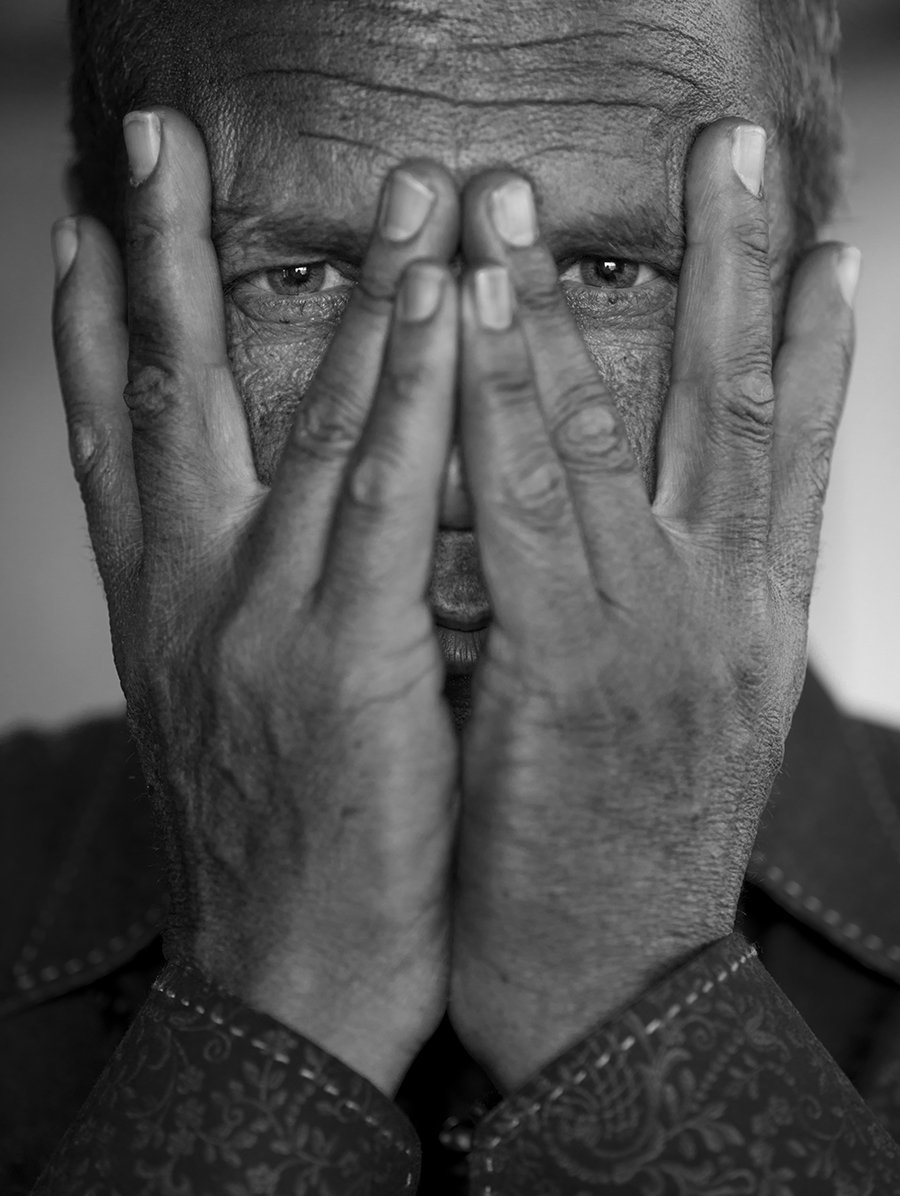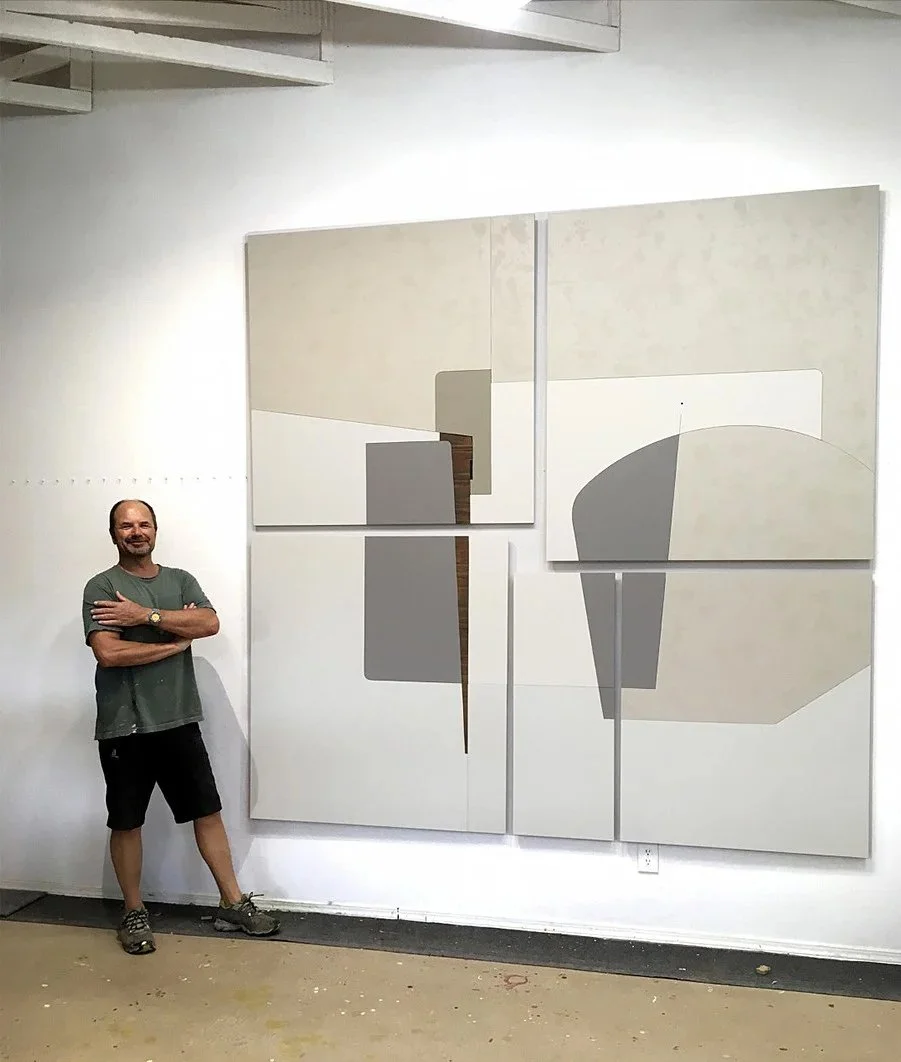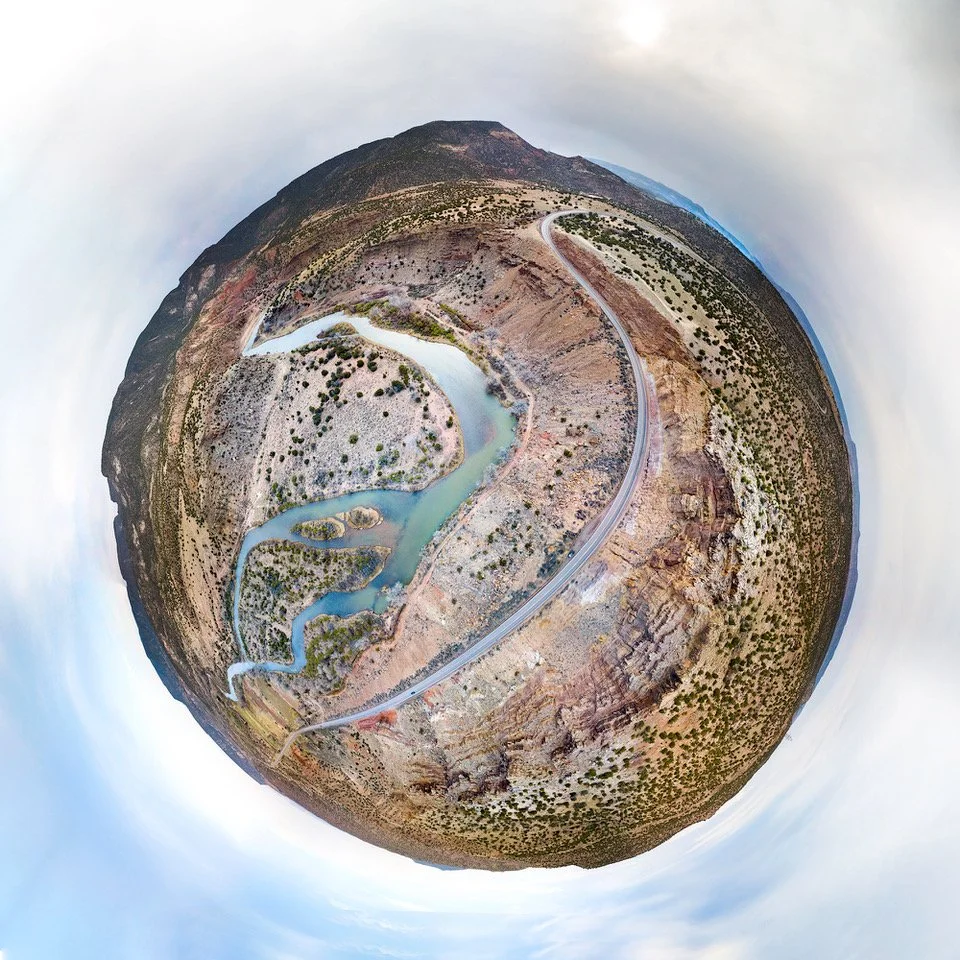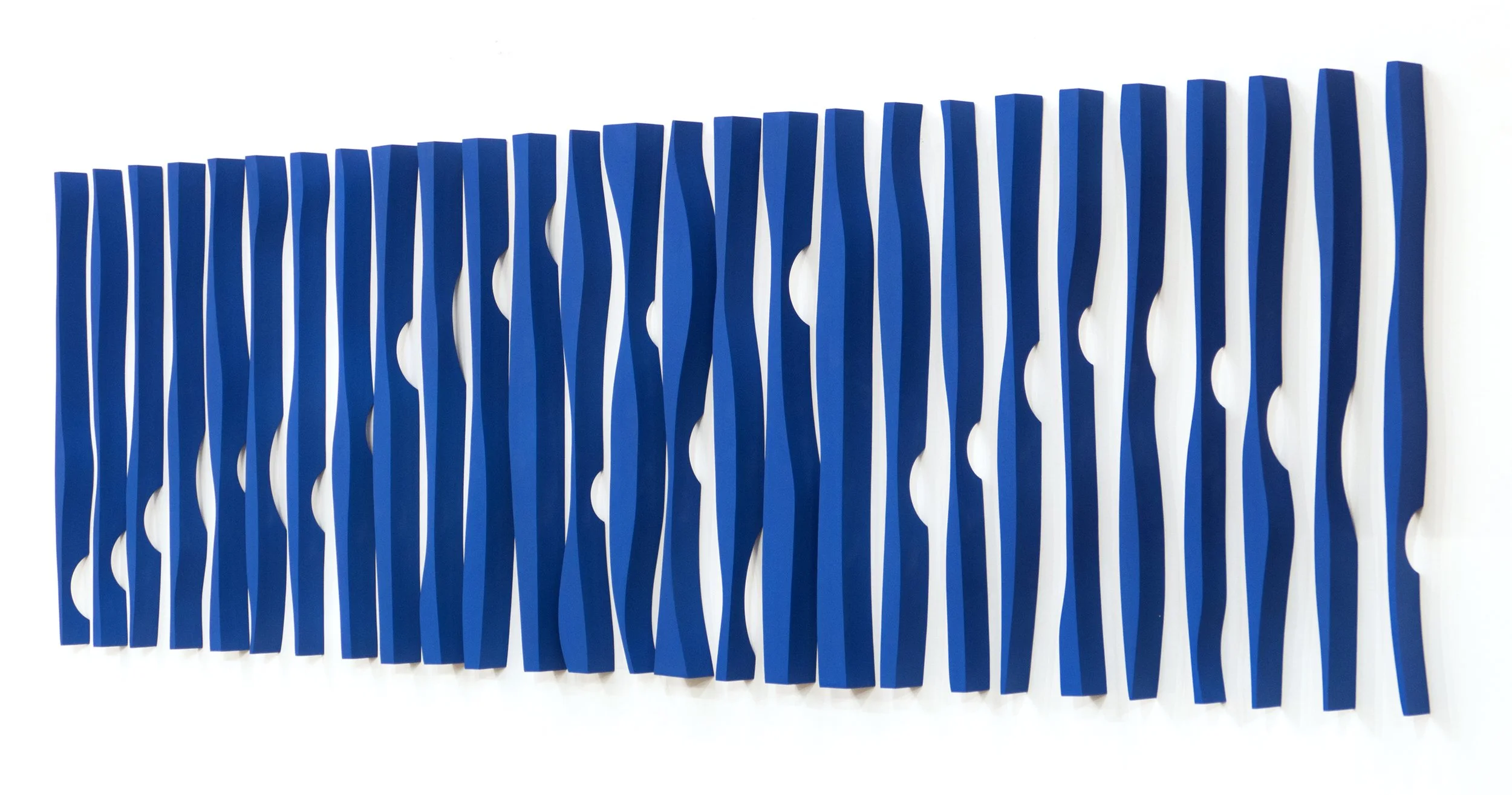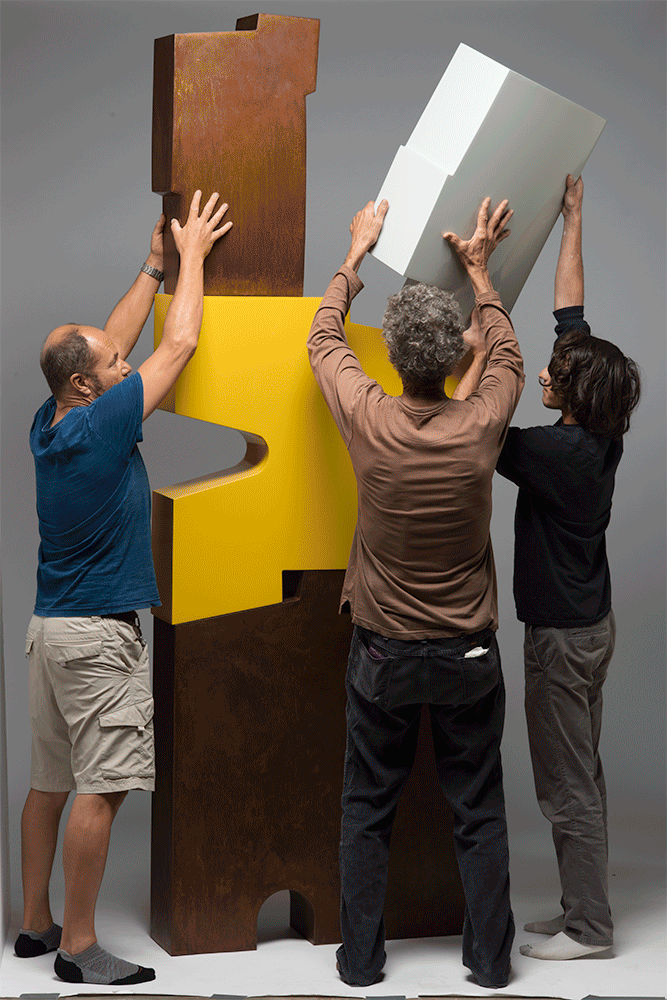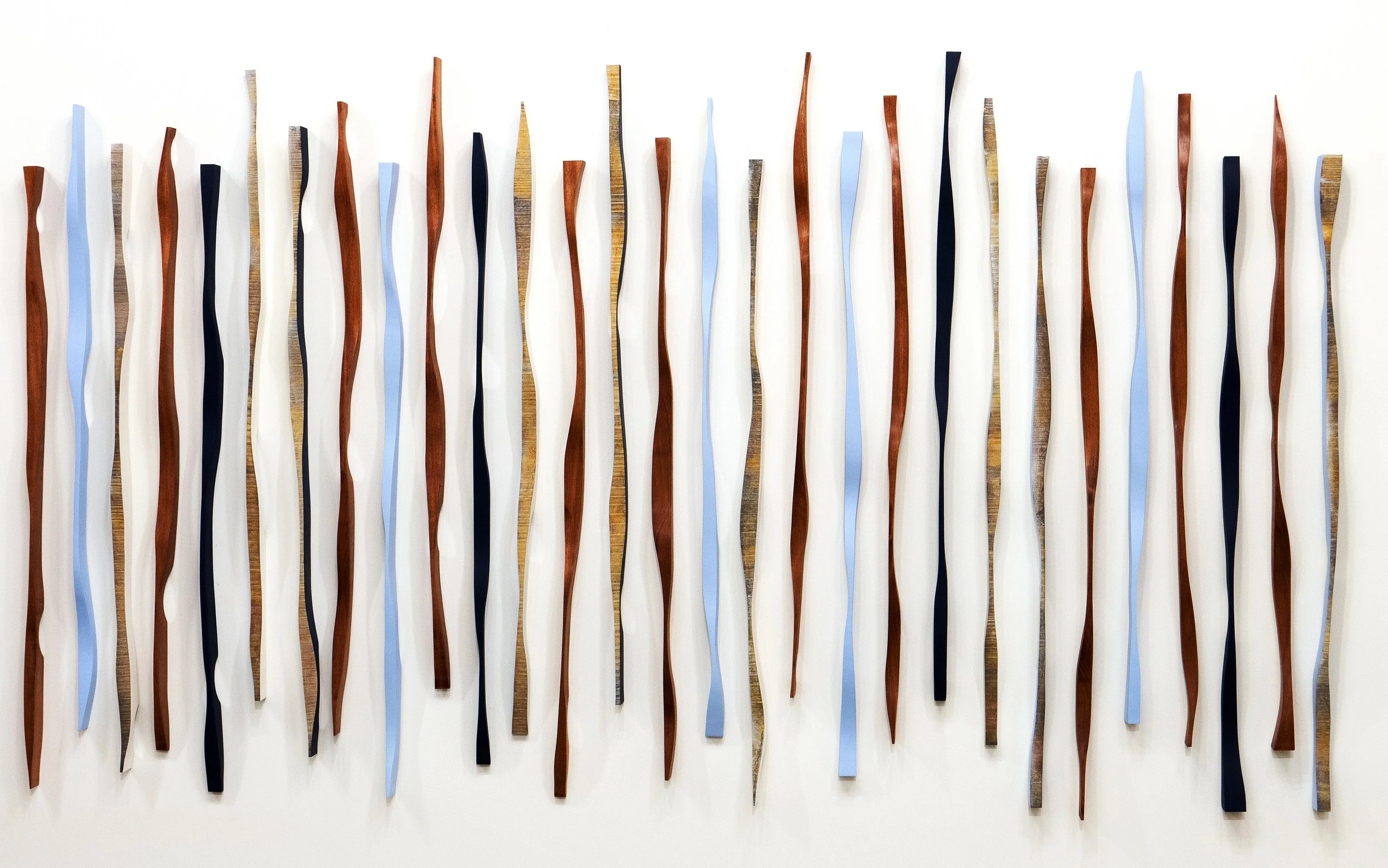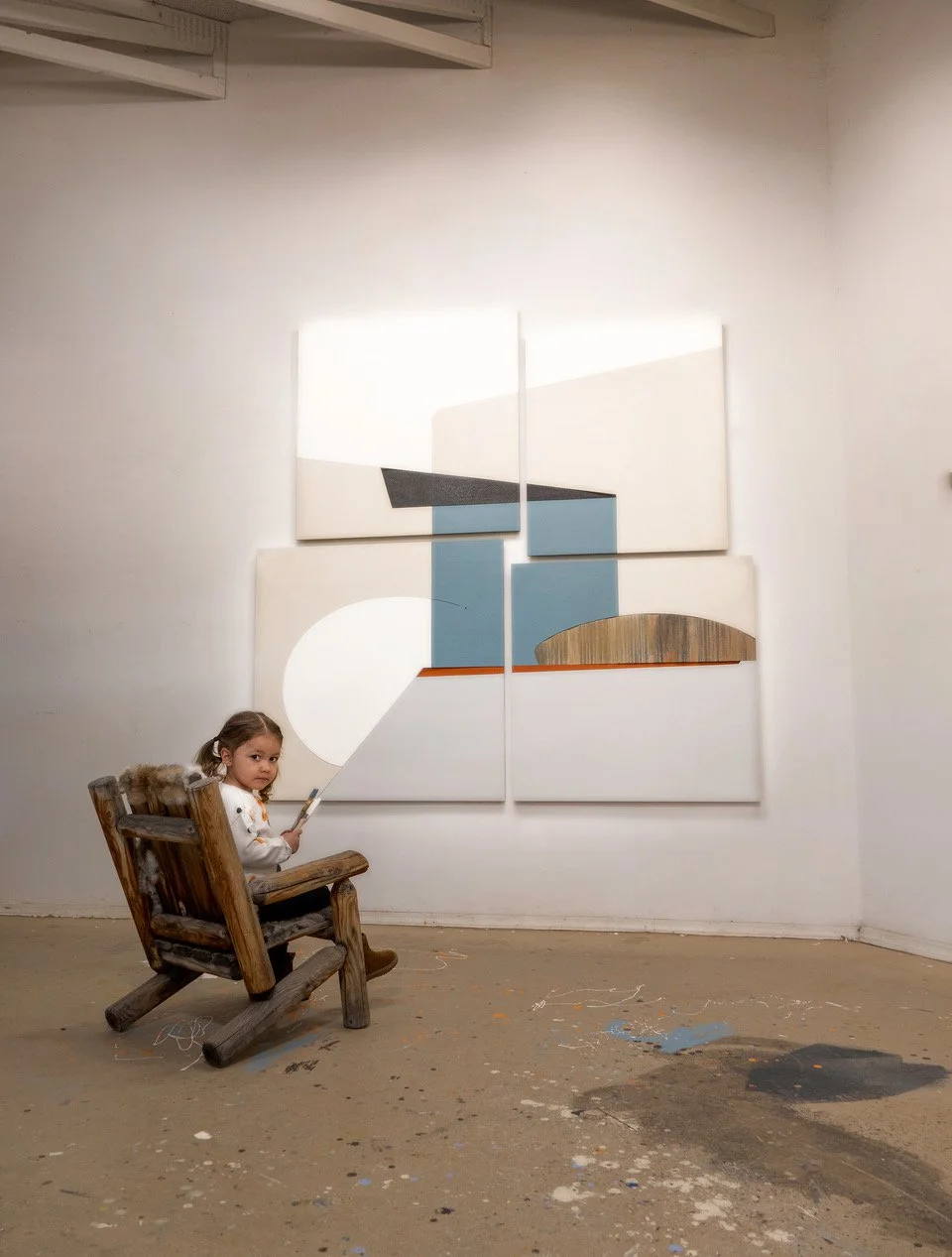It is our pleasure to highlight Pascal Piermé this month with a special interview before presenting his latest works at VOLTA NewYork, May 17th-21st 2023. Booth D3.
We have worked with Pascal for a number of years, hanging up his mesmerizing mural sculptures all over the world! We’ve also had the pleasure of working with him on commissions for collectors and interior designers.
Request your complimentary tickets for Volta at the end of this blog
From his French origins, Pascal Pierme retains a certain influence: a grandfather who was a former naval ship carpenter who became a wood sculptor, and an artist father. It was while discovering the US more than 25 years ago that his career began, using wood as the primary material for his works, which are an ode to harmony and a perpetual search for purity. Today we meet in his studio in Santa Fe, New Mexico...
Interview by Isabelle Chabrat for Michele Mariaud.
Gallery Talk with Pascal Piermé
MM: In the past 25 years, New Mexico seems to be a real source of inspiration for you, would you be able to work and create elsewhere than where you are today?
Pascal Piermé: In reality, I fell in love with Santa Fe, before seeing Santa Fe! The first few days after I arrived here, we went fishing in the rivers, lakes, and mountains, that's what I fell in love with first. So I could work elsewhere, yes, but it would have to be somewhere in the western United States. I need this space, the desert, and its magical side. Furthermore, it inspires a lot of writers who have a strong connection with the desert... because I think that's where our origins come from. It's stripped of everything, so it simplifies our minds. It's everything that comes with living in the Western U.S. that matters to me!
Rio Chama, NM
MM: You primarily work with a natural material, wood, in your sculptures. When you create your work, do you incorporate the flaws and diversity of this material, or do you seek to change its shape from the start?
Pascal Piermé: Initially, I was extremely attracted to all sorts of wood, species, shapes, and colors. So I experimented and created very diverse works: violins with tree stumps, I used the cracks in the wood, there were smells in the workshop, I burned pieces... not anymore. Today, wood has become primarily a simple material for me. I use mahogany because it is a wood that can be shaped very well, nobler than cottonwood or pine, but in reality, what interests me the most is that it almost does not exist. Its presence is very soft, It is calm, and there are not all these veins or movements which I try to avoid as much as possible.
Horizontal Thoughts I, Mahogany, 29.5 X 27” (2023)
MM: So finally, the wood almost disappears, would you say you are in complete control of the material?
Pascal Piermé:Yes, completely, though this was not the case before. Today the wood disappears a little, I actually use the practical side of the material, which does not detract from its romantic side. My work has evolved, I needed to leave things that were very natural and varied, the material, the wood, a part of craftsmanship too. And then everything has been purified. because you have to simplify, simplify, simplify.
Origines Ama III, Mahogany, 24 X 80”, 2023
MM: So would you say mastery of the material is essential to support your creativity?
Pascal Piermé: Working with a material such as wood requires a different creative process than that of a painter, for example. When I have an idea in mind, I then have to go to work: cutting, sanding, painting, etc. I often face technical questions and from the beginning, I have to think about which piece will go in which direction. But, I like these confrontations. When I go to my workshop, I'll fight a little against a situation and play around with it until I like it. I have to find a solution somewhere. I think a lot about my work beforehand and I put myself in a mindset to find that answer. My approach is to be creative and spontaneous and to avoid technical decisions that are definitive. I try to stay as creative as possible for as long as possible.
Recherche du Noir I, mixed media, 36 X 74” (2023)
MM: In the series of sculptures offered by Michele Mariaud, some are made of wood, others of steel. Does the strong relationship you have with nature disappear when you work with steel?
Pascal Piermé: Not really, because in almost all of my sculptures I need Nature, but I don't necessarily need to go into nature and bring back materials. If the sculpture is made of wood, that's good, it's the origin. In metal, it's a limited edition, but the message is the same. What I like to do is take forms that may have originally been together, but have since separated, and I put them back together. For example, I could very well start with a square piece of wood, cut it, and respecting the three pieces obtained, keeping their proportion, I will create a sculpture. And so with these 3 pieces, by composing the original square again, what interests me of course are the spaces between these modules and the movement, the slow movement that is precisely in nature: all these rocks that are there, that have cracks, that move. We often give the symbol of movement by making fast gestures but it's not necessarily true, there are movements that are extremely slow. And so the space between these modules interests me a lot, when you look through, when you move around the sculpture, these spaces are as important as the main material. (e.g. "murals").
Pallo IV, Steel, 96X38X18, edition of 8 (2016)
MM: Movement is then a key element in your work. What other words would you use to describe it?
Pascal Piermé: Definitely when I start a piece, what first comes to my mind and is very important, is movement. I like there to be an organic side, even though the word is quite misleading at the moment. It also implies balance and harmony. Purity is also a very important word, trying to simplify the message. Finally, this relationship that I have with space, the air that surrounds us, is also essential.
Origines Ocean 1, Mahogany, 40 X 87” (2022). Front view
Origines Ocean 1, Mahogany, 40 X 87” (2022). Left view.
Kuro Horizon I, Mahogany, 27.5 X 29”. (2023)
His grand-daughter is already looking to carry on the family destiny.

